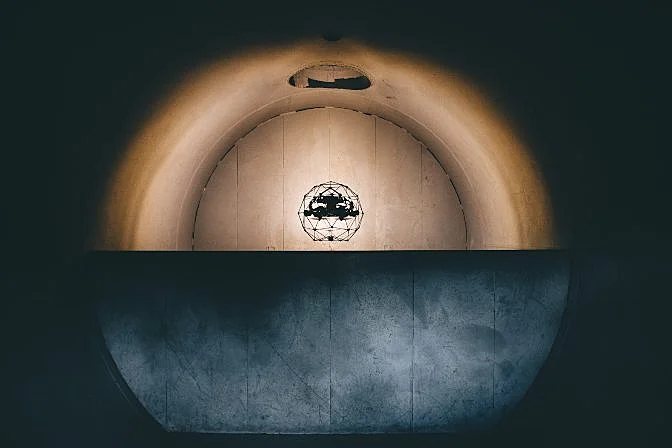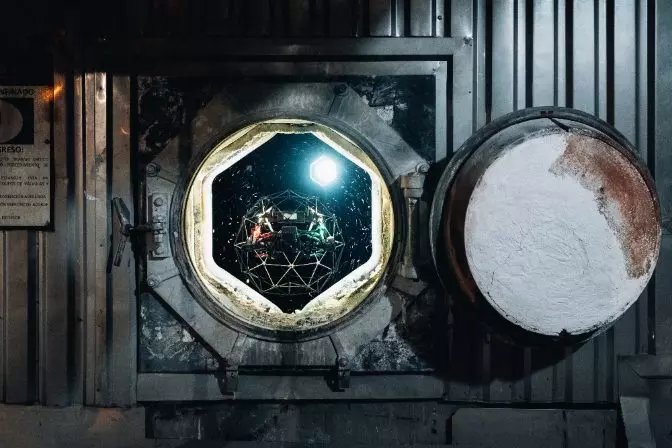What is a Pressure Vessel?
Pressure vessels are industrial containers designed to hold vapors, liquids, or gases under pressure. These vessels play a crucial role in various industries, from energy production to chemical processing.
Because pressure vessels often operate at high pressures, they can pose significant risks if not properly maintained. Regular inspections are essential to ensure their safety and longevity, helping to identify potential issues before they escalate into major problems.
In this guide, we explore what pressure vessels are, the requirements for their inspection, common questions about them, and how modern technology like drones is revolutionizing the inspection process.
What is a Pressure Vessel?
While we’ve already defined pressure vessels as containers designed to hold vapors, liquids, or gases at specific pressures, it’s important to note that each country has its own legal definitions. These distinctions exist because pressure vessels can be extremely dangerous if not handled correctly.
To manage these risks, most countries have strict regulations governing their design, construction, and operation. Each pressure vessel also has specific operating limits, known as "design pressure" and "design temperature," which must be strictly followed to prevent failure.
If a vessel operates beyond these limits, it could lead to catastrophic failure—resulting in explosions, fires, or leaks of hazardous materials that could endanger people and the environment.
Common Characteristics of Pressure Vessels
Pressure vessels typically share several key characteristics:
- Shape: The most common shapes are cylinders, spheres, and cones, chosen for their structural strength.
- Design: The mass of a vessel increases with volume and pressure, but stronger materials can reduce the required mass.
- Materials: Steel is the most common material due to its strength, though composites and reinforced concrete are also used.
- Corrosion Resistance: Materials must be selected based on the environment and substances they will contain.
- Pressure: Most pressure vessels operate at 15 psig or higher.
Psig stands for Pounds Per Square Inch Gauge, a measurement commonly used in industrial applications.
Types of Pressure Vessels
Pressure vessels come in many forms, depending on their function. Some of the most common types include:
- Storage Tanks: Used to store liquids, often made of carbon steel.
- Boilers: Generate steam or hot water, built to withstand high temperatures and pressures.
- Heat Exchangers: Transfer heat between two fluids, widely used in manufacturing and food processing.
- Process Vessels: Used for chemical reactions or material processing, often made of carbon steel.
Safety Considerations in Design
Given the inherent dangers, pressure vessel design includes multiple safety features:
- Safety Valves: Release pressure to prevent over-pressurization.
- Leak Before Burst: Designed to leak rather than explode, allowing for safer pressure release.
These features are mandated by standards such as ASME and AIAA to ensure safety across global operations.
Pressure Vessel Inspections
Regular inspections are vital to maintaining the integrity and safety of pressure vessels. This section covers how often inspections should occur, what they involve, and the tools used to conduct them.
 The Elios 2 collects visual data during an inspection
The Elios 2 collects visual data during an inspection
Frequency of Inspections
Most regulations require pressure vessels to be inspected at least once every five years, with additional checks after installation or before being put into service.
What Is Done During an Inspection
Inspections may include:
- Visual and thickness measurements
- Stress analysis
- Testing of pressure release valves
- Hydrostatic pressure tests
Types of Pressure Vessel Testing
Common testing methods include:
1. Visual Testing
The most straightforward method, involving a detailed visual inspection of both the interior and exterior of the vessel.
2. Ultrasonic Testing
Uses sound waves to detect internal flaws and measure wall thickness.
3. Radiographic Testing
Uses X-rays to detect surface and subsurface defects.
4. Magnetic Particle Testing
Detects surface cracks using magnetic fields and iron particles.
5. Dye Penetrant Testing
Identifies surface flaws using a fluorescent dye that becomes visible under UV light.
Pressure Vessel Inspection Checklist
A typical checklist includes:
External Inspections
- Check for corrosion, leakage, and damage to insulation and coatings
- Inspect welds, flanges, and nozzles for cracks or deformations
Internal Inspections
- Look for cracks, corrosion, or other defects inside the vessel
- Check threaded connections and openings for obstructions
Creating a checklist can help ensure nothing is missed during an inspection.
Common Questions About Pressure Vessels
Here are some frequently asked questions about pressure vessels:
- At what pressure does a vessel become classified as a pressure vessel?
- What's the difference between fired and unfired pressure vessels?
- Which regulatory bodies oversee pressure vessel design and inspection?
- What are the main pressure vessel standards globally?
At What Pressure Does a Vessel Become a Pressure Vessel?
Generally, a vessel is considered a pressure vessel if it holds vapors, gases, or liquids at 15 psig or higher.
What Is the Difference Between an Unfired and a Fired Pressure Vessel?
Fired vessels receive heat directly or indirectly, while unfired vessels rely on external heat sources. Fired vessels are more complex and require special safety measures.
What Regulatory Codes Apply to Pressure Vessels?
Regulations vary by country, but common ones include ASME, EN 13445, and JIS.
What Are the Pressure Vessel Standards Around the World?
Standards like ASME Section VIII, AD Merkblätter, and API 510 are widely recognized and used in different regions.
Five Ways Drones Can Help with Pressure Vessel Inspections
Drones are transforming the way pressure vessel inspections are conducted. They offer a safer, faster, and more efficient alternative to traditional methods.

Using a drone like the Elios 2 allows inspectors to safely access hard-to-reach areas and collect high-quality data without entering confined spaces. This not only improves safety but also reduces costs and downtime.
Some benefits of using drones include:
1. Safety
Eliminates the need for human entry into hazardous environments.
2. Cost Savings
Reduces the need for scaffolding and speeds up the inspection process.
3. Access
Allows for close-up views of critical components like welds and nozzles.
4. Better Data
Provides clear, detailed visual records that can be reviewed later.
5. Environmental Benefits
More frequent inspections can reduce emissions and improve sustainability.
The Future of Pressure Vessel Inspections
As technology advances, the future of pressure vessel inspections looks promising. Drones and remote sensing tools are becoming more sophisticated, offering even greater accuracy and efficiency.
The Growing Adoption of Drones
Drones are increasingly being used for inspections due to their ability to quickly access difficult areas and gather detailed data. This trend is expected to continue as companies seek safer and more cost-effective solutions.
Recent Technological Advances
New technologies like SLAM (Simultaneous Localization and Mapping) and advanced sensors are expanding the capabilities of drones. These innovations allow for real-time 3D mapping and more comprehensive data collection, making inspections more reliable and thorough.
Heat Exchanger, Suction Line, Cu-Al Connect Tube
cheap and common Fin Type Condenser,high quality Cooling Fridge Refridgerator,Finned Type Cooling high quality Evaporator,,condensator and common evaporator
Xinxiang Yukun Refrigeration Technology Co.Ltd , https://www.yukunevaporator.com
